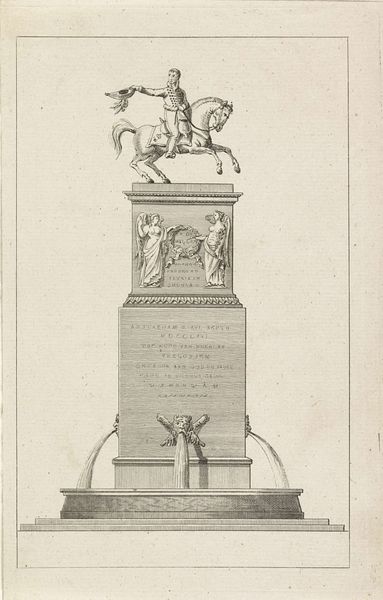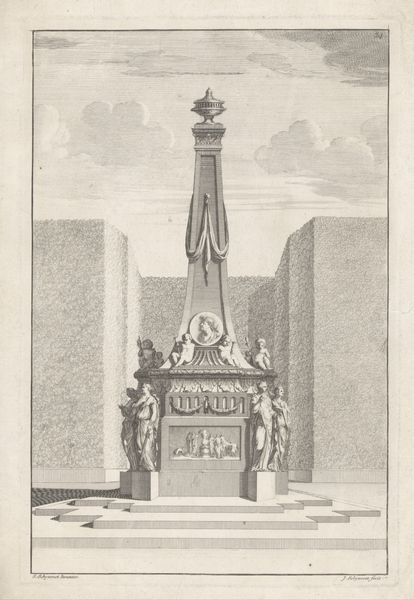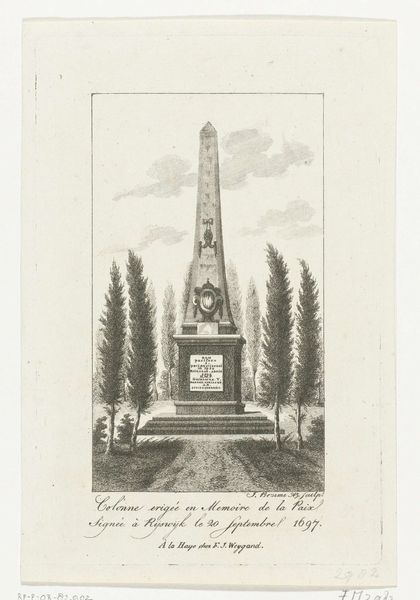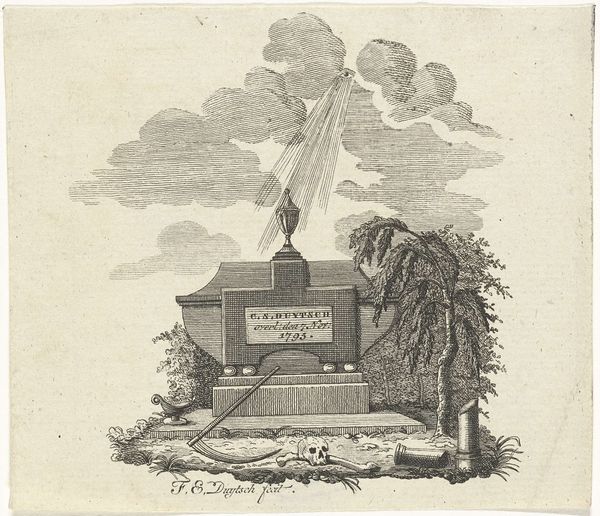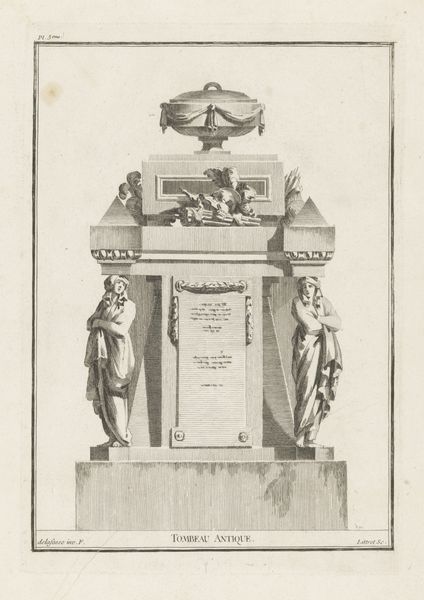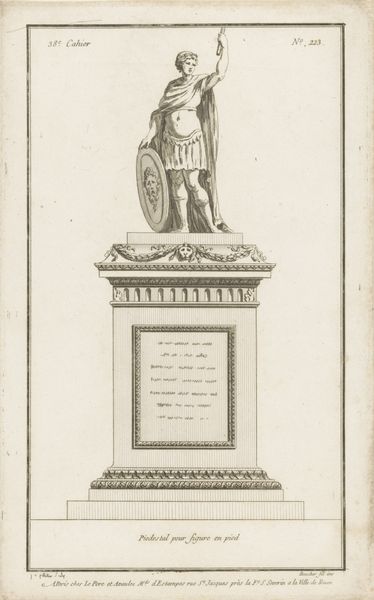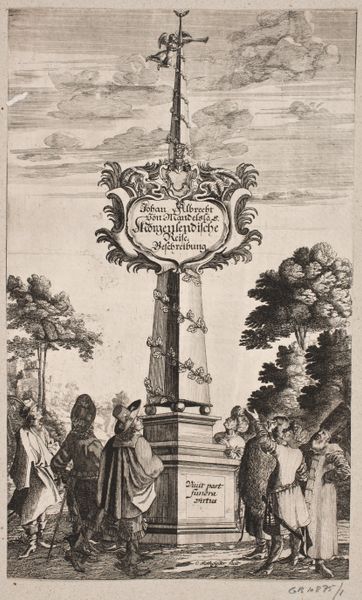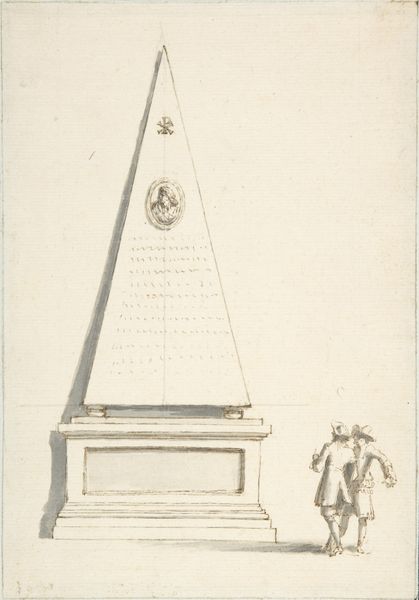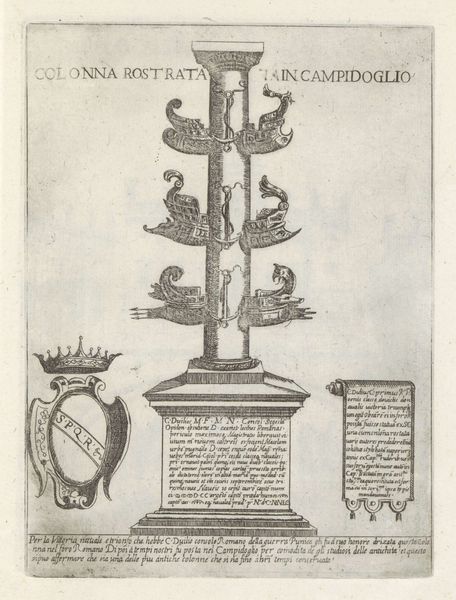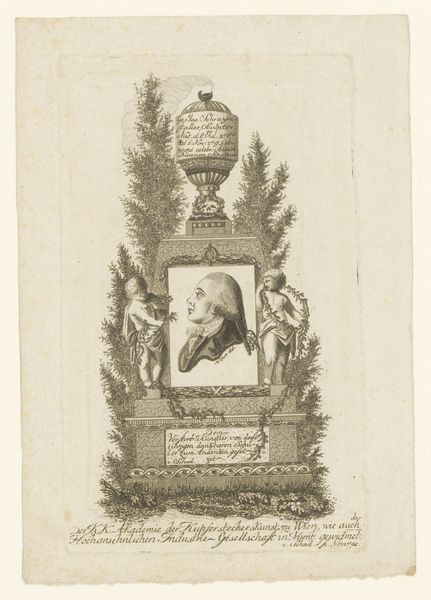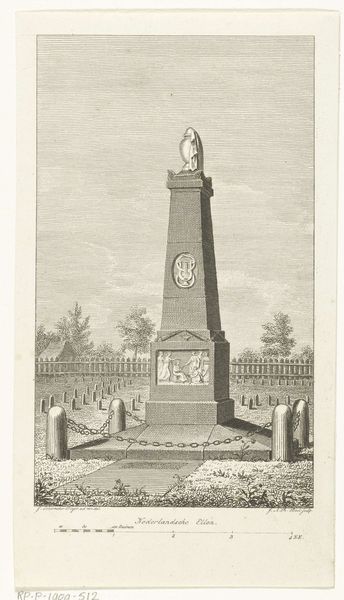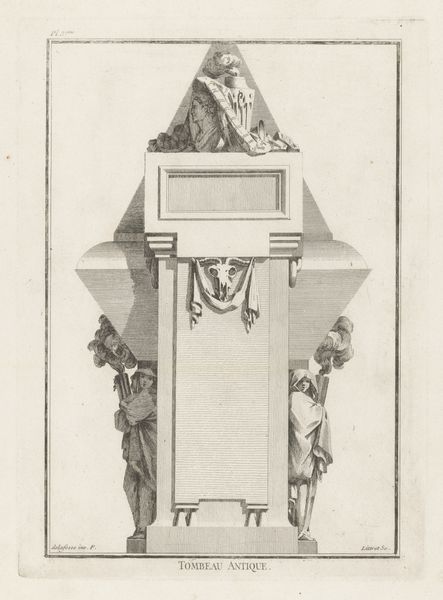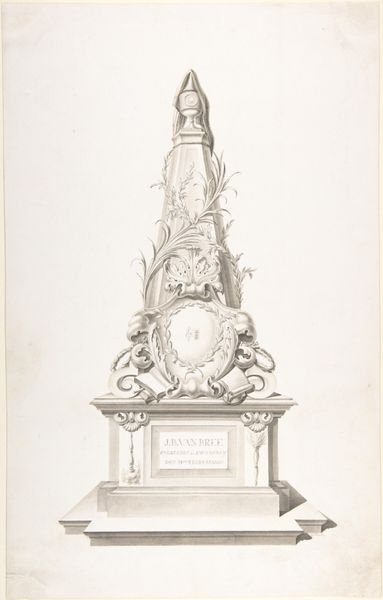
print, engraving
#
aged paper
#
light pencil work
#
quirky sketch
#
baroque
# print
#
pencil sketch
#
old engraving style
#
sketch book
#
landscape
#
form
#
personal sketchbook
#
sketchwork
#
line
#
sketchbook drawing
#
history-painting
#
sketchbook art
#
engraving
Dimensions: height 327 mm, width 224 mm
Copyright: Rijks Museum: Open Domain
This print, made by Johannes Valdor in 1649, depicts a monument in a landscape. But what is the public role of a monument? Here, the obelisk-like structure is adorned with allegorical figures – Justice at the top, and other symbolic forms relating to law, governance and authority. The inscription indicates that it commemorates “Louis the Just, Combattant”, suggesting it was designed to promote the image of Louis XIII of France, as a fair and martial ruler. The print was made at a time when visual imagery was crucial to the construction of royal power. The artist, Valdor, was working within a well-established tradition of state portraiture and triumphal arches that aimed to manufacture consent for the absolutist regime. To understand this image more fully, we might look at state archives or consult pamphlets and treatises of the time to get a better sense of the monument’s political meaning. By understanding the social and institutional context, we can better appreciate art’s complex dialogue with the structures of power.
Comments
No comments
Be the first to comment and join the conversation on the ultimate creative platform.
